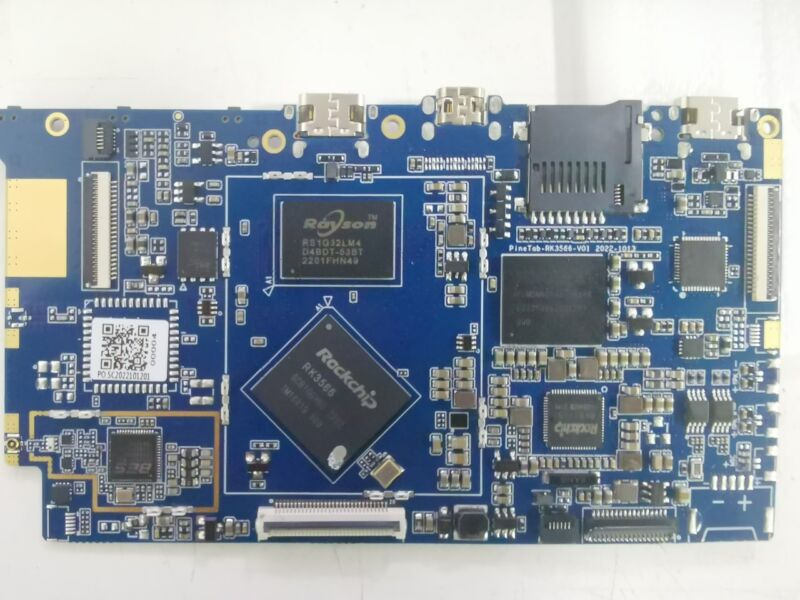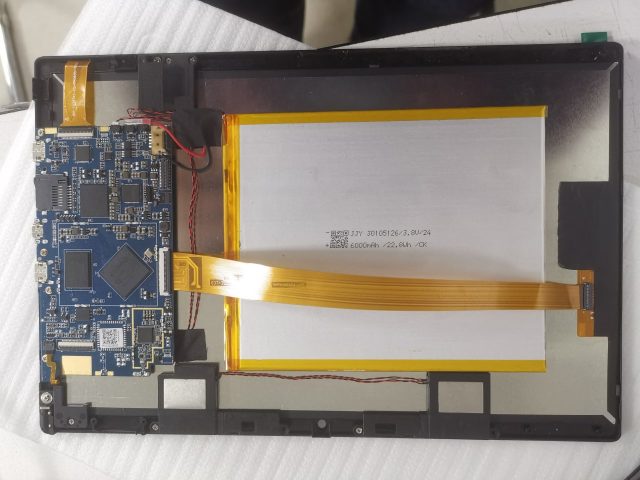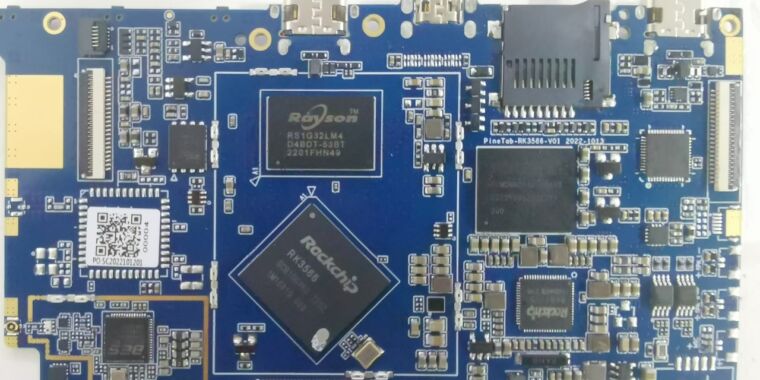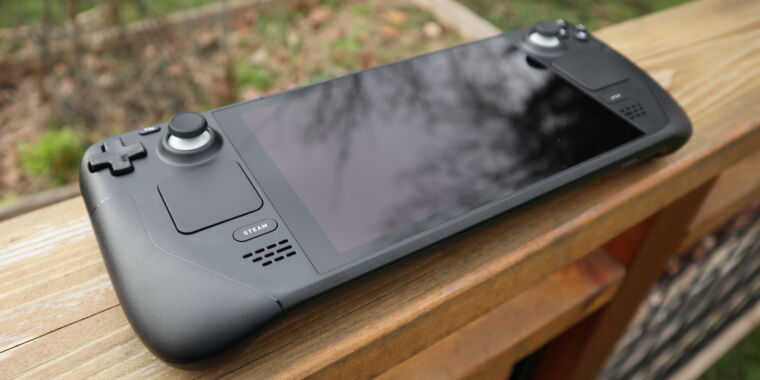
Pine64
Pine64, makers of ARM-based, tinker-friendly gadgets, is making the PineTab 2, a sequel to its Linux-powered tablet that mostly got swallowed up by the pandemic and its dire global manufacturing shortages.
The PineTab 2, as described in Pine64’s “December Update,” is based around the RK3566, made by RockChip. Pine64 based its Quartz64 single-board system on the system-on-a-chip (SoC), and has all but gushed about it across several blog posts. It’s “a dream-of-a-SoC,” writes Community Director Lukasz Erecinski, a “modern mid-range quad-core Cortex-A55 processor that integrates a Mali-G52 MP2 GPU. And it should be ideal for space-constrained devices: it runs cool, has a variety of I/O options, solid price-to-performance ratio, and “is genuinely future-proof.” While Linux support was scarce early on, development for RK3566 is “booming,” and it’s now a prime candidate for mobile operating systems, Erecinski writes.

The PineTab 2 is a complete redesign, Erecinski claims. It has a metal chassis that “is very sturdy while also being easy to disassemble for upgrades, maintenance, and repair.” The tablet comes apart with snap-in tabs, and Pine64 will offer replacement parts. The insides are modular, too, with the eMMC storage, camera, daughter-board, battery, and keyboard connector all removable “in under 5 minutes.” The 10.1-inch IPS display, with “modern and reasonably thin bezels,” should also be replaceable, albeit with more work.
Pine64’s video for their December update—details about the PineTab 2 start at 7:11.
On that easily opened chassis are two USB-C ports, one for USB 3.0 I/O and one for charging (or USB 2.0 if you want). There’s a dedicated micro-HDMI port, and a front-facing 2-megapixel camera and rear-facing 5-megapixel (not the kind of all-in-one media production machine Apple advertises, this tablet), a microSD slot, and a headphone jack. While a PCIe system is exposed inside the PineTab, most NVMe SSDs will not fit, according to Pine64. All of this is subject to change before final production, however.
As with the original PineTab, this model comes with a detachable, backlit keyboard cover, included by default. That makes supporting a desktop OS for the device far more viable, Erecinski writes. The firmware chipset is the same as in the PineBook Pro, which should help with that. No default OS has been decided as of yet, according to Pine64.
The tablet should ship with two memory/storage variants, 4GB/64GB and 8GB/128GB. It’s due to ship “sometime after the Chinese New Year” (January 22 to February 5), though there’s no firm date. No price was announced, but “it will be affordable regardless of which version you’ll settle on.”
The original PineTab eventually shipped, but Erecinski describes it as “a victim of COVID and its fallout,” and its “death” as a choice to focus on the PinePhone. Pine64 later iterated on the phone to deliver the PinePhone Pro. As with the PineBook and PinePhone, context is key: This is a device meant for tinkering, experimenting, or using as a truly low-power spare/alternate device, not a daily driver or workhorse for most people. Those who know themselves enough to order, however, should keep an eye out early next year.
Listing image by Pine64








